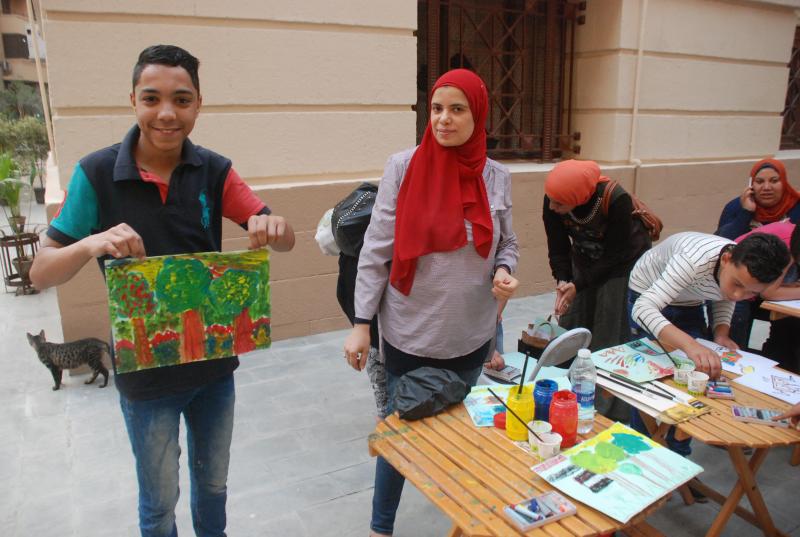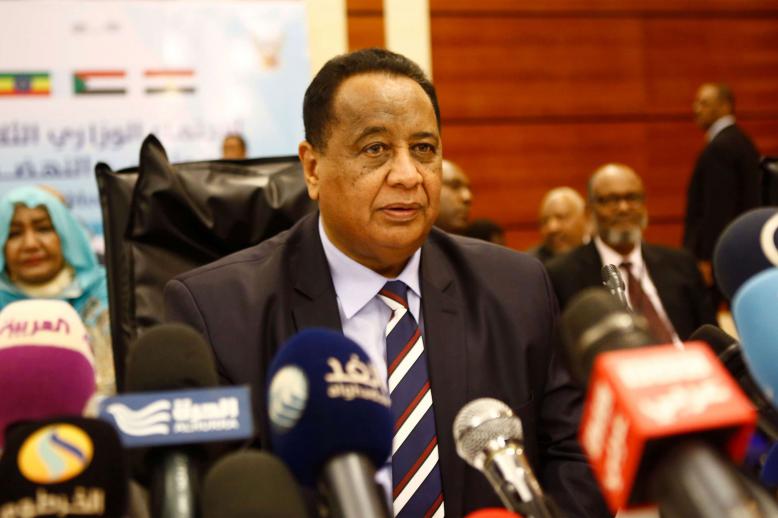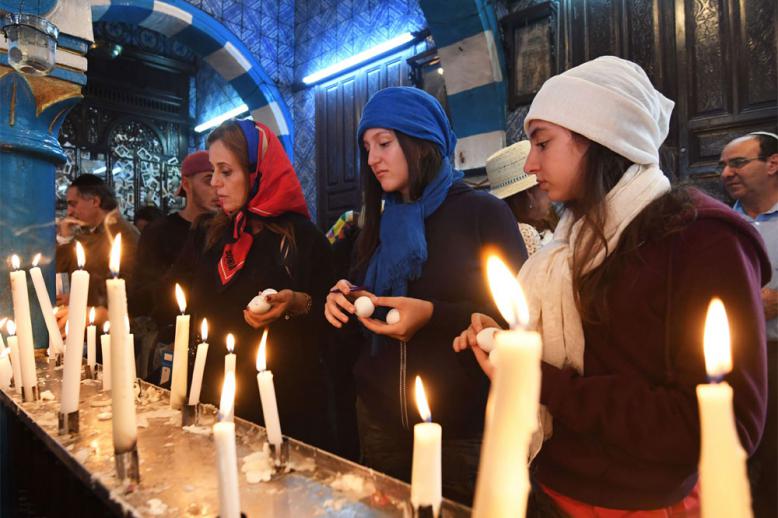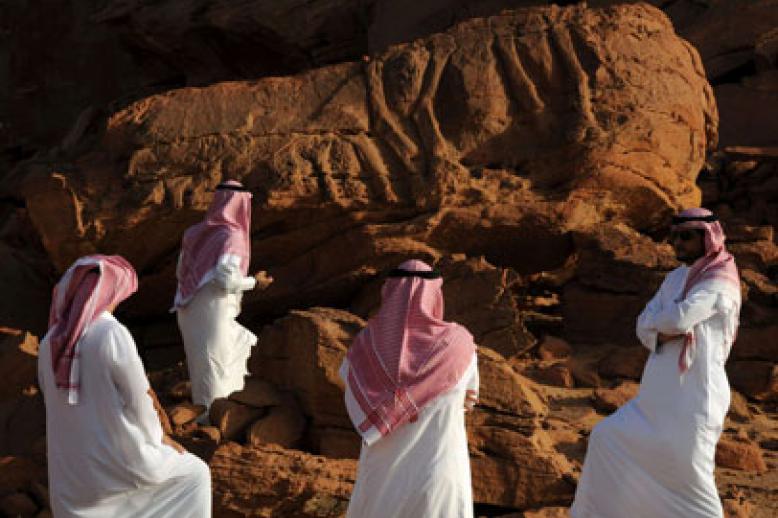Open-air art centre gives downtown Cairo a facelift
Al Sharifain Street in the heart of Cairo’s bustling city centre has become a favourite venue for artists and art-lovers after a makeover provided dedicated space for art activities.
Painters, musicians, singers, comedians and makeup artists converge every Sunday behind the century-old building of the Central Bank of Egypt to display their works and earn a living.
The location, which for decades had been a spot for street sellers and coffee shops, was converted into an open-air art centre to change the chaotic image of Cairo’s downtown.
“We have totally changed everything in the street, from the painting of the fronts of its buildings to its tiles,” said Mohamed Abu Seda, the head of the National Organisation for Urban Harmony, the government agency responsible for restoring downtown Cairo. “Our aim is to turn this part of the centre of the capital into a gathering point for innovative people of all types.”
A street is pedestrian-only and, apart from painting the fronts of the buildings and changing the tiles, authorities have increased green spaces. Beautiful palm trees were planted in the middle of the street and on both sides and benches were installed for visitors to watch artists at work.
Portraitist Ahmed Fathi, 23, said he has been unemployed since graduation a year ago. When he heard about the street turning into a venue for artists, he applied for space.
“I go to the street to draw people and everybody loves it,” Fathi said. “The street is giving artists like me the chance to exhibit their work, which is a great service.”
At a time of economic duress and scarce employment opportunities, especially for arts professionals, the public art space gives artists badly needed exposure.
Guitarist Tamer al-Maghrabi, 27, who plays his guitar in Al Sharifain every Sunday, said he was making useful contacts that brought him work and money. “People are coming to me, getting my phone number and asking me to play at their wedding parties,” he said.
The Sound and Light Company — famous for its work on the Great Pyramids of Giza — manages the street lighting, using its expertise to give the buildings the light accentuation they deserve.
Downtown Cairo is one of the most architecturally rich areas in Egypt. It adorns a mix of Arabic culture and different European architectural styles. The Cosmopolitan Hotel, which was constructed in 1923 by Italian architect Alfonso Sasso, and the headquarters of the Central Bank of Egypt, built in 1890 as a hotel, are examples of iconic buildings.
One thing that all Egyptians agree on is that time has taken a toll on this place.
The overhaul of Al Sharifain Street cost $681,000. The project was mainly funded through donations by banks, Egyptian businessmen and major global companies with offices in downtown Cairo.
The makeover of Al Sharifain is part of an ambitious $34 million plan to turn the centre of Cairo into a tourist site. Despite its many attractions, the centre of the Egyptian capital has been deserted by tourists for many years because of its overcrowding and chaotic nature.
Downtown Cairo, which is only metres from the Nile and the old Egyptian Museum that is home to tens of thousands of ancient Egyptian artefacts, is also an open-air architectural museum. The centre of the capital contains hundreds of buildings that were designed and constructed by Italian, Greek, German and British engineers.
It is the most expensive spot in Cairo, with some of the country’s most important hotels, restaurants, commercial shops and bars.
Downtown Cairo’s overhaul includes renewing building facades, closing coffee shops, transforming the streets into pedestrian zones and converting commercial activities to the service of tourists.
Al Sharifain Street, Abu Seda said, stood only as a model for the rest of downtown Cairo.
“All artists would find the space they need at the centre of the city. Downtown Cairo suffered enough neglect in the past decades, and we are keen on restoring it to its traditional beauty and having it a centre of art once again,” he added.
This article was originally published in The Arab Weekly.







